Multiple times in the past few years there’s been a Northern Harrier perched on one of the bushes around this gravel parking lot but without exception every time I’ve tried to approach the bird it has flown off before I could get close enough for a quality shot. Frustrating…
So earlier this week when I spotted a handsome male on the large darker bush to the right in the photo below I decided to try a different tack. Birds very often seem much less inclined to spook if there’s something between them and the photographer and it doesn’t have to be anything very substantial – even a few twigs will often do. Having something physical between them and a potential threat seems to give them a sense of security. So even though I’ve often cussed this ugly old dumpster over the years (I realize it’s there for a very good reason) I decided to try to put it to good use for my purposes.
I slowly drove to the left of the dumpster, turned around and approached the bird with the dumpster between me and the harrier. The harrier obviously knew I was there but with the ugly old hunk of metal between us it didn’t fly off. Then as I got very close to the dumpster I slowly turned to my right just far enough to give me a look at the bird through my lens from my pickup window.
1/3200, f/6.3, ISO 500, 500 f/4, 1.4 tc
As you can see the harrier was wary but he gave me just enough time to get set up on him before he flew. My only hope for any decent images was flight shots because so much of the bird was obscured by the vegetation.
1/3200, f/6.3, ISO 500, 500 f/4, 1.4 tc
Because of the direction the bird was facing (slightly away from me) I didn’t have a lot of hope for acceptable images because I figured he’d turn to his left as he took off and give me butt shots only. I have enough of them already... But this bird surprised me by cooperating in that regard.
Full disclosure: I clipped the very tip of the third primary in this image so I had to “repair” the feather and add a narrow strip of canvas up top for composition – but I wanted to include the photo as an integral part of the take-off series.
1/3200, f/6.3, ISO 500, 500 f/4, 1.4 tc
Normally this photo is not one I’d keep because so much of the head is hidden by the wing but I liked the peek-a-boo effect of the eye just well enough to hang on to it and include it here.
1/3200, f/6.3, ISO 500, 500 f/4, 1.4 tc
This one is probably my favorite of the series. The dark spot below the bird is flying debris from take-off.
1/3200, f/6.3, ISO 500, 500 f/4, 1.4 tc
Blood from a recent meal (most likely a vole) is clearly visible on the left foot.
1/3200, f/6.3, ISO 500, 500 f/4, 1.4 tc
With this wing position I often clip a wing tip but I got lucky on this one.
1/3200, f/6.3, ISO 500, 500 f/4, 1.4 tc
The last in the series before I lost focus on the bird as it passed some near some vegetation in the background.
I learned something with this bird. I’m the first to admit that I’m the poster child for the phrase “creature of habit” (something Mia loves to tease me about relentlessly). I tend to instinctively and repeatedly do things the same way. I wish I’d thought of using this dumpster to approach harriers several years ago but it just never entered my mind. Gotta remember to be a little more flexible in my approach…
Another thing I wanted to illustrate with this post is the value of a camera with a relatively fast burst rate. My Canon 7D shoots 8 frames per second which is invaluable during fast action such as take-offs. Many flight postures just don’t work very well so the more shots you can take in the very little time you have when a bird launches the better chance you have of getting something you like. You can see from the file numbers of the 6 take-off images here (those numbers can be seen by passing your cursor over the image) that they’re all sequential with the exception of #0616 which I didn’t include because of a poor wing position.
Ron


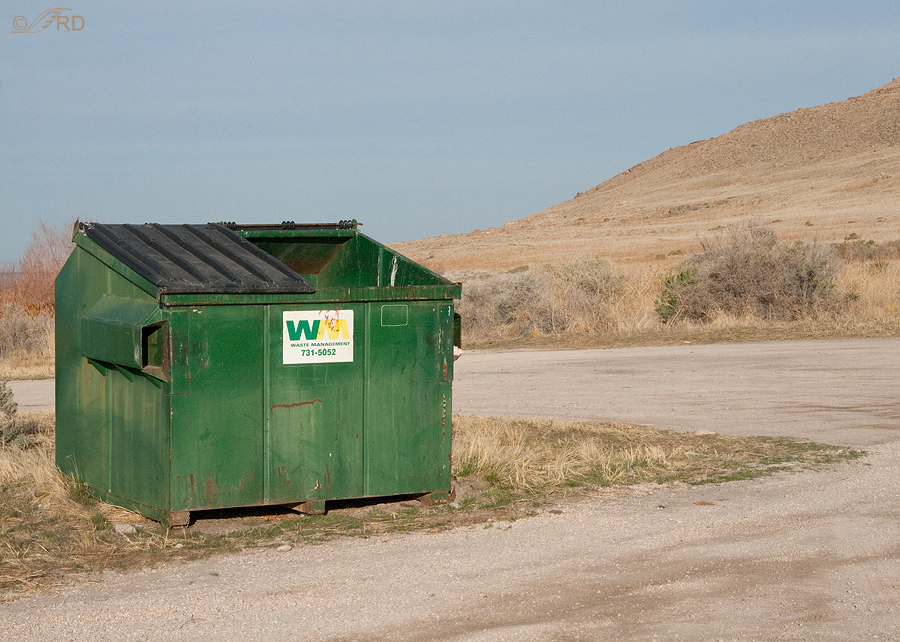


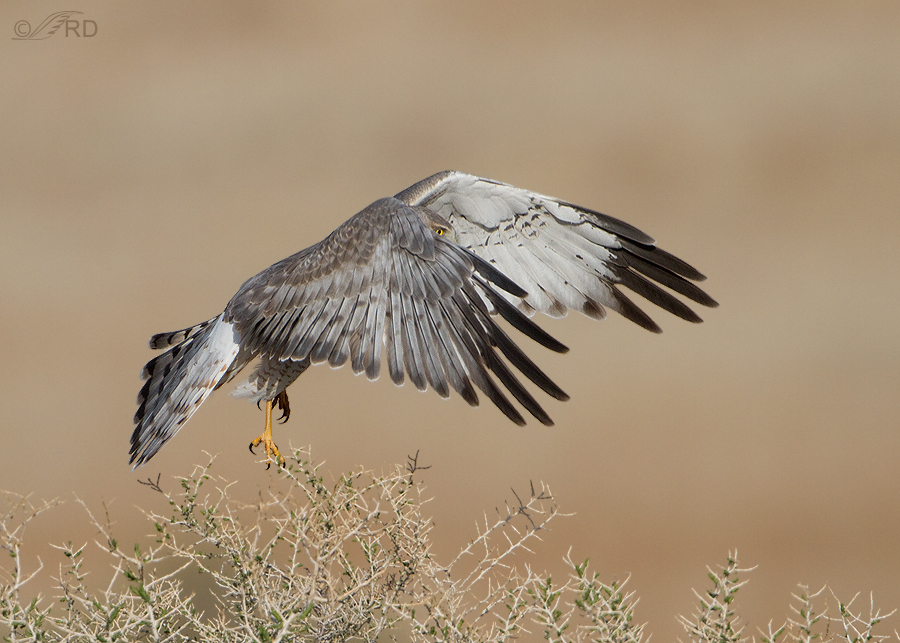
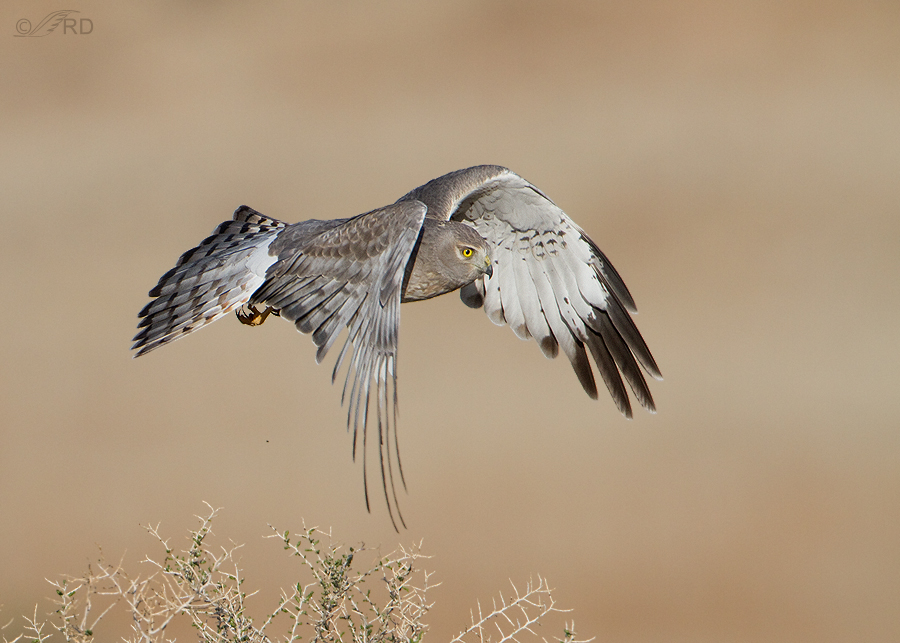
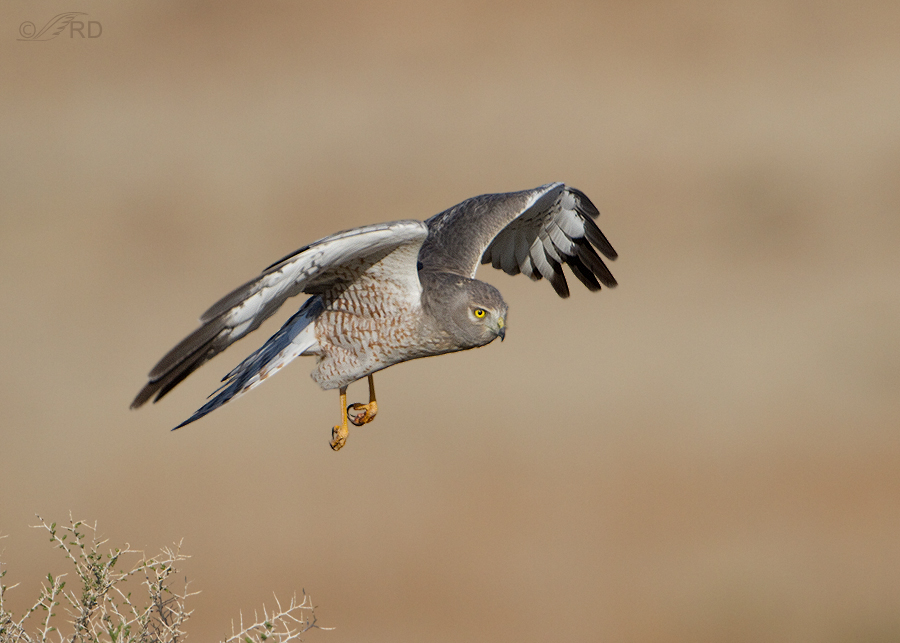
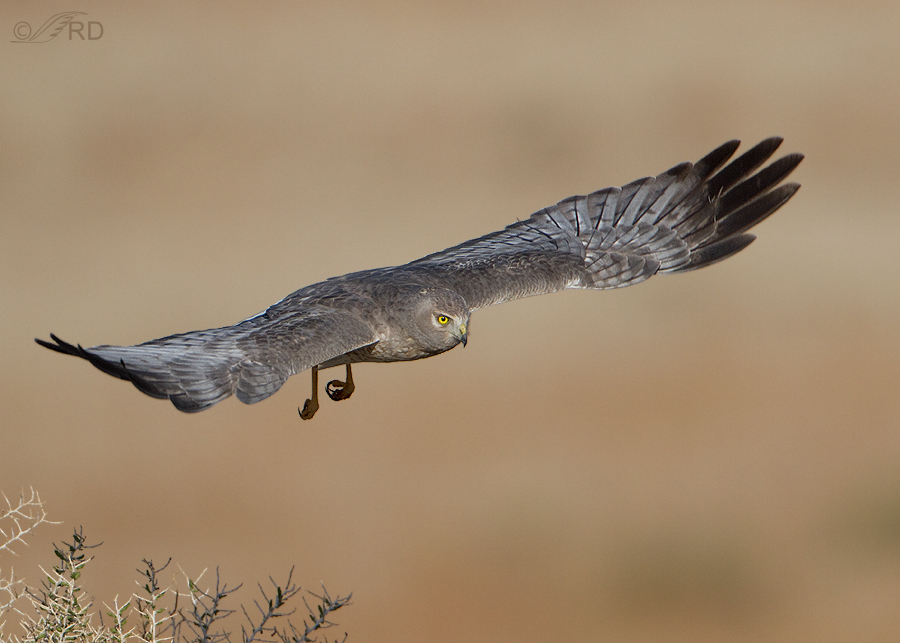
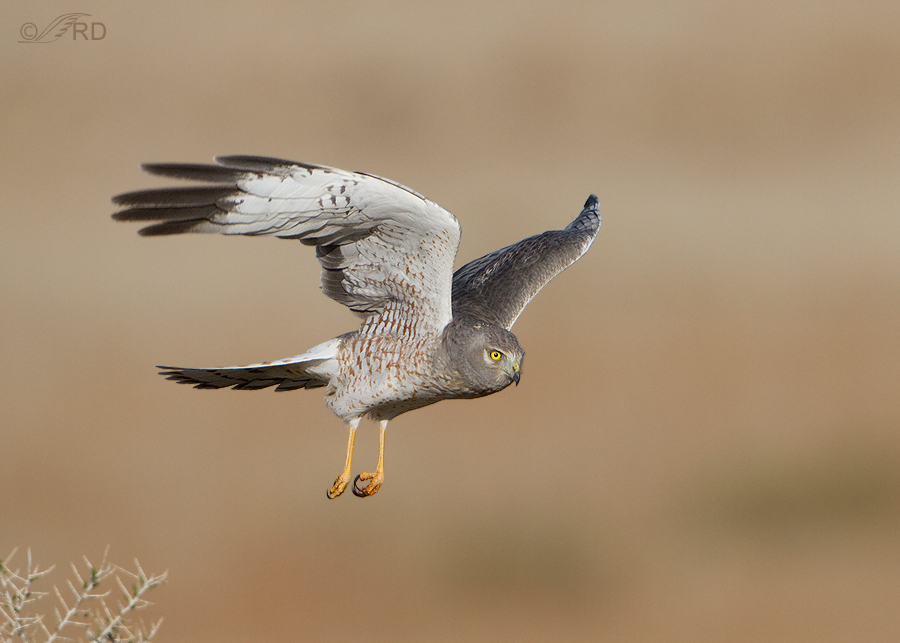
From your title I conjured up a Harrier scrounging in a dumpster ala Magpie. But YOU were the dumpster diver! Love that peek-a-boo shot.
Ron,
The Harrier is great. I got a 7D a few months ago to replace an original model 5D, and I’m really having fun. My raptor oportunities are limited (you are tempting me to visit Utah), and I mainly aim at little guys. The frame rate is great for getting that microsecond when the bird turns his head just so. Looking at your work made me realize that the noise reduction was good enough that I could crank up the ISO to get a higher shutter speed, too, and freeze some action. I thought you might get a kick out of these Kinglet shots.
http://www.flickr.com/photos/lgooch/6876225412/in/set-72157629307724600/lightbox/
These are ISO 400 f8 1/500 with a 100-400 IS zoom. I have a 500 mm, but I find that the 7D let’s me carry the camera with me when I go out for a walk and get some fun behavior and plumage shots. In the second to last of this sequence (… 101) you can see a bit of the caterpillar’s blue ventral side in the bird’s throat.
Thanks again for the blog. I always look forward to it.
Laura, regarding ISO, noise and the 7D I generally feel completely safe up to ISO 500. Usually ISO 640 works fairly well too unless the background is quite dark and/or the crop is going to be a relatively large one. I’ll use ISO 800 if I have to but I almost never go above that.
Those are exceptionally fine images of the kinglet, particularly using the 100-400. Kinglets are little dynamos that are difficult to photograph well and you did a great job of catching it with prey and you got excellent looks at the crown. Well done.
Lovely stealth shots!
Thank you Tana.
Ron, I thought “Flexible” was your middle name?? I need to see a copy of your birth certificate!
Yes, I love to tease you (endlessly) about being a creature of habit but it is always nice to see an old bird learn a new trick!
Yeah, I’m just ruffling your feathers.
Every once in a while I do learn a new trick Mia. And I’m getting better at it, in no small part thanks to you…
Hello Ron,
I have discovered the same approach tactic when I take my walks in the desert behind our place. I always try to put something in front of me or approach in the shadows of a tree. I don’t know why it only took me a year to figure that one out. Excellent series of this Harrier, I never get tired of looking at them, way to go.
Jim
Hi Jim. Thanks for the comment. When I’m stalking a bird on foot I often try to put something between us if it’s available but for some reason I never thought to do it in a vehicle using this dumpster.
I, too, love that peek-a-boo shot, Ron. I like the way you tell your techniques. Don’t you just love that 7D. I am like you, I love my 7D, and I would rather put any extra money I have into new glass. However, I don’t know if I will move to that new 500. At 10,000 I think I will hang onto my 500 f4. It has always been state-of-the-art so I don’t see how they can improve the optics that much. I do like the reduced weigh, though. I love these Harrier shots. This may be a dumb question, but did you hand-hold your camera, or did you have time to get set up with the tripod? Again, awesome images again. 🙂
Thank you Bob. I don’t know what I’ll do regarding the new 500. I love the idea of that much weight reduction, better IS, two flourite lenses instead of one etc but that’s a helluva lot of money for me. I guess I’ll just have to see what the first reviews are like and then decide if I’m going to let it seduce me. I love my 7D too but do wish for faster and more precise autofocus and maybe a bit better handling of noise at higher ISO settings.
To answer your question, I seldom hand-hold or use a tripod. I’m nearly always shooting out of my pickup. As usual, this harrier was shot out of my pickup window using my trusty “noodle” as a lens rest. I love that noodle!
Definitely a great set of images!! That Canon 1DX has 12fps; Maybe if I save up all my money for a year I’ll be able to buy it. I also have the Canon 7D. Which lens do you use the most?
Thanks Mavourneen. The lens I use for birds almost exclusively is the Canon 500 f/4. As far as the 1DX goes, I’d love some of its features but the full frame sensor is a big drawback for me – as is the king’s ransom they’re asking for it. I’d much rather put that kind of money into lenses (like the new 500mm Canon’s coming out with next month).
I love the peek-a-boo shot, and the wing curl in the seventh photo. Thank you.
Great work — beautiful birds.
Thank you Scott – I always appreciate your feedback.
Another set of fantastic images!